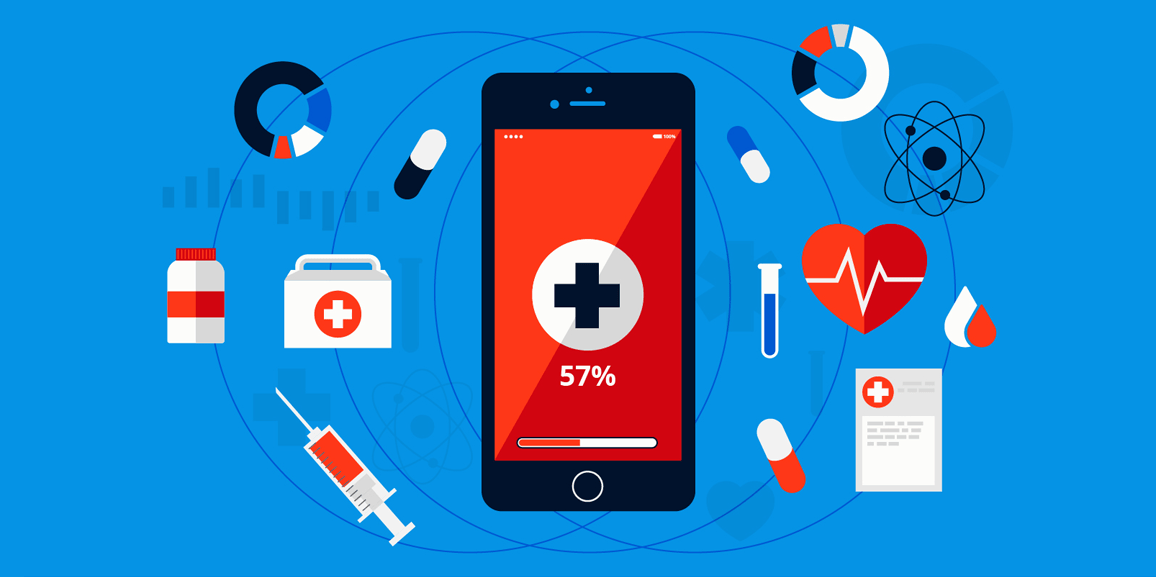Artificial intelligence (AI) and the internet of things (IoT) are two of the most prominent topics in technology today, each with their sets of long-term impacts. The healthcare sector is one of the few areas where both these technological aspects can make a significant impact. Telehealth services rely significantly on the conjoined efforts of IoT and AI to extend efficient medical care to patients.
Reasons why IoT and AI are suitable for telehealth services
The two forms of advanced technology in telehealth can improve not only patient monitoring but also improve day-to-day operations of a clinic/hospital/nursing home. Here are some ways in which such a change can benefit the healthcare sector as a whole –
1. Improving the accuracy of diagnosis
Certain diseases and symptoms are so easy to confuse that even veterans in the medical profession can mistake one for the other. Traditional tests may not allow diagnosis with complete accuracy in such a case. Nevertheless, an AI-enables telehealth service can clear such confusion by reading various scans itself. The technology can also clear any clouding in scans, leading to a clearer and crisp final image, thus improving the accuracy of diagnosis.
2. Remote monitoring facilities of IoT automate tracking patient vitals
Previously, doctors needed to rely on handwritten charts in hospitals to know any changes in patients’ vitals. Nurses often had to measure blood pressure, temperature, and pulse of a patient hourly for record-keeping purposes.
Thankfully, with telehealth services, this monitoring can be completed by IoT sensors in a hospital. Therefore, if there are any irregularities in a patient’s vitals now, his/her attending physician is notified of the same immediately. IoT is responsible for this entire automated procedure. Although usage of this technology is limited at present, one can expect it to be normalized in the future.
3. Prioritising patients based on the nature of illness or injury
It often takes a considerable time for hospital staff to go through a patient’s case file and determine whether he/she requires emergency medical attention. This time can prove to be crucial for a patient’s health, in some cases. While manually going through thousands of case files to determine the priority of medical care can be taxing, it the accurately and quickly completed by IoT and AI.
Both of these systems working in tandem can alert doctors to cases where a patient’s vital signs are dropping, thereby warranting immediate medical intervention. This technology works with excellent precision, preventing any oversight when it comes to healthcare.
4. Ensures a time-efficient system
IoT services can reduce waiting times at a healthcare facility by bringing in a more efficient system than the current one in practice. IoT systems can track beds within a hospital and notify staff members whenever there is a bed available for patients. In some cases, the implementation of these systems leads to a reduction in waiting time by almost half than what it was before.
5. Tracking missing medical equipment
Each year, hospitals and nursing homes spend a considerable sum of money on funding the purchase of replacement equipment. In many cases, such replacement products are necessary because the previous one is misplaced during operations. Medical equipment can be difficult to procure when it comes to cost, which is why losing any equipment can lead to substantial additional expenses.
Thankfully, modern pieces come with enhanced technologies, such as GPS tracking facility, which are connected to IoT systems. Thus, upon misplacement, one can easily locate such devices from within the hospital premises.
These are just some of the ways in which AI and IoT can make a significant difference when it comes to digital services like telemedicine. However, the integration of such technologies into medical care may result in a sudden hike in expenses for patients when availing advanced medical care. For some, this added cost of affordable care may be too much to bear.
Nevertheless, holders of health cards like the Bajaj Finserv Digital Health EMI Network Card can rest easy knowing such advanced therapies would be affordable to them. This health card can greatly reduce medical liabilities, ensuring a limited financial burden.
What are the benefits of health care?
The primary feature of this health care is that it allows one to defer any immediate medical liabilities. All medical bills are converted into EMIs, that is why digital healthcare is easier in comparison to paying the entire amount at once. Additional features of this card include –
- More than 800 covered medical procedures and services, including telemedicine, cosmetic treatments, and more.
- EMI repayment option with tenures ranging up to 24 months.
- A substantial pre-approved limit, which can range up to Rs.4 lakh for eligible customers.
- More than 5,500 network facilities and outlets, where one can avail cashless treatment. These facilities are spread across over 1,000 cities.
- Individuals can avail instant-cards by paying a one-time fee of Rs.707. One can also opt for a non-instant card at just Rs.589.
- Lastly, card owners can start utilizing its benefits as soon as their applications meet with approval, with financing available for all family members.
With the advancement of medical care and telehealth services in general, owning such a financial product can significantly assist you in availing the best possible healthcare services. Apply for a health card online for quicker and easier approvals.





